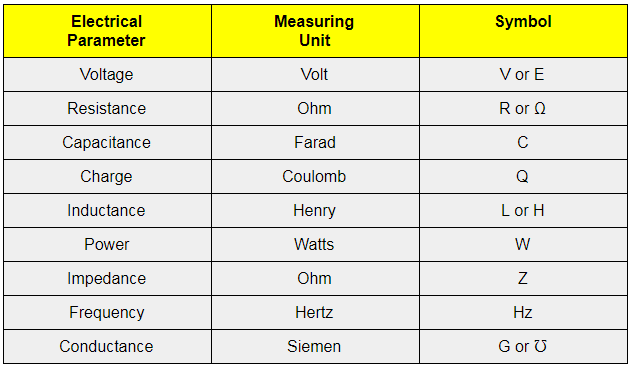Voltage, current, and resistance are the most common terminologies we hear in physics. Current is referred to as the flow of electric charge carriers. Resistance is the measure of the opposition to the flow of electric current in an electrical circuit. Voltage is also referred to as electric potential difference, electric pressure or electric tension. In this article, let us learn voltage definition, SI unit of voltage, and other electrical units.
| Table of Contents: |
Voltage Definition and Formula
As per voltage definition, it is the difference in the electric potential between two points. It is the work done in moving a charge from one pole to another through a wire.
To determine the voltage between any two points, both a static electric field and a dynamic electromagnetic field is considered.
The mathematical representation of voltage is as follows:
| V = IR |
Where,
- V is the voltage in volts
- I is the current in amperes
- R is the resistance in ohms
| Symbol of voltage | V, ΔV |
| SI unit of voltage | Volt |
| Dimension of voltage | ML2T-3I-1 |
SI Unit of Voltage
After knowing the voltage definition and voltage formula, let us learn the SI unit of voltage. The standard unit of measurement used for the expression of voltage is volt which is represented by the symbol v. However, the volt is a derived SI unit of electric potential or electromotive force. For this reason, volt can further be defined in several ways.
Volt can also be defined as electric potential along a wire when an electric current of one ampere dissipates one watt (W) of power (W = J/s).
V = W/A
Volt can be expressed as the potential difference between two points in an electric circuit that imparts one joule (J) of energy per coulomb (C) of charge that passes through the circuit.

It can also be expressed as amperes times ohms, joules per coulomb (energy per unit charge), or watts per ampere (power per unit current).

And finally, volt can be stated in SI base units as 1 V = 1 kg m2 s-3 A -1 (one-kilogram meter squared per second cubed per ampere).
Read more : The difference between voltage and EMF
Other Electrical Units
Some of the other electrical units are given below.

| Unit of Momentum | Unit of Acceleration |
To know more about electric potential, one volt, and voltage in detail click on the video below.

Frequently Asked Questions – FAQs
What happens to current when voltage is increased?
According to Ohm’s law, the law states that the electrical current, I is proportional to the voltage, V and is inversely proportional to the resistance, R. Therefore, when voltage is increased, current also increases provided that the resistance in the circuit is maintained.
What happens to the power when voltage is increased?
From the formula of power, we can say that power is the product of voltage and current. From the definition, we can say that the current is inversely proportional to the voltage when power is constant. Therefore, when the voltage is increased, power will increase proportionally provided that the current is constant.
What is ideal voltage source?
An ideal voltage source is defined as the two-terminal element in which the voltage across these terminals is specified at every instant of time. Also, voltage is independent of the current through the source, that is the current can flow in any direction through the source.
Mention common sources of voltage.
The most common sources of voltage are batteries and generators.
What are the types of voltage sources?
There are two types of voltage sources, and they are independent voltage sources and dependent voltage sources. Alternating voltage source and direct voltage source are the types of independent voltage sources while voltage controlled and current-controlled voltage are the types of the dependent voltage source.
Hope you have learnt about the voltage definition along with its SI unit. Stay tuned with BYJU’S to know more about various science and maths topics.




Comments